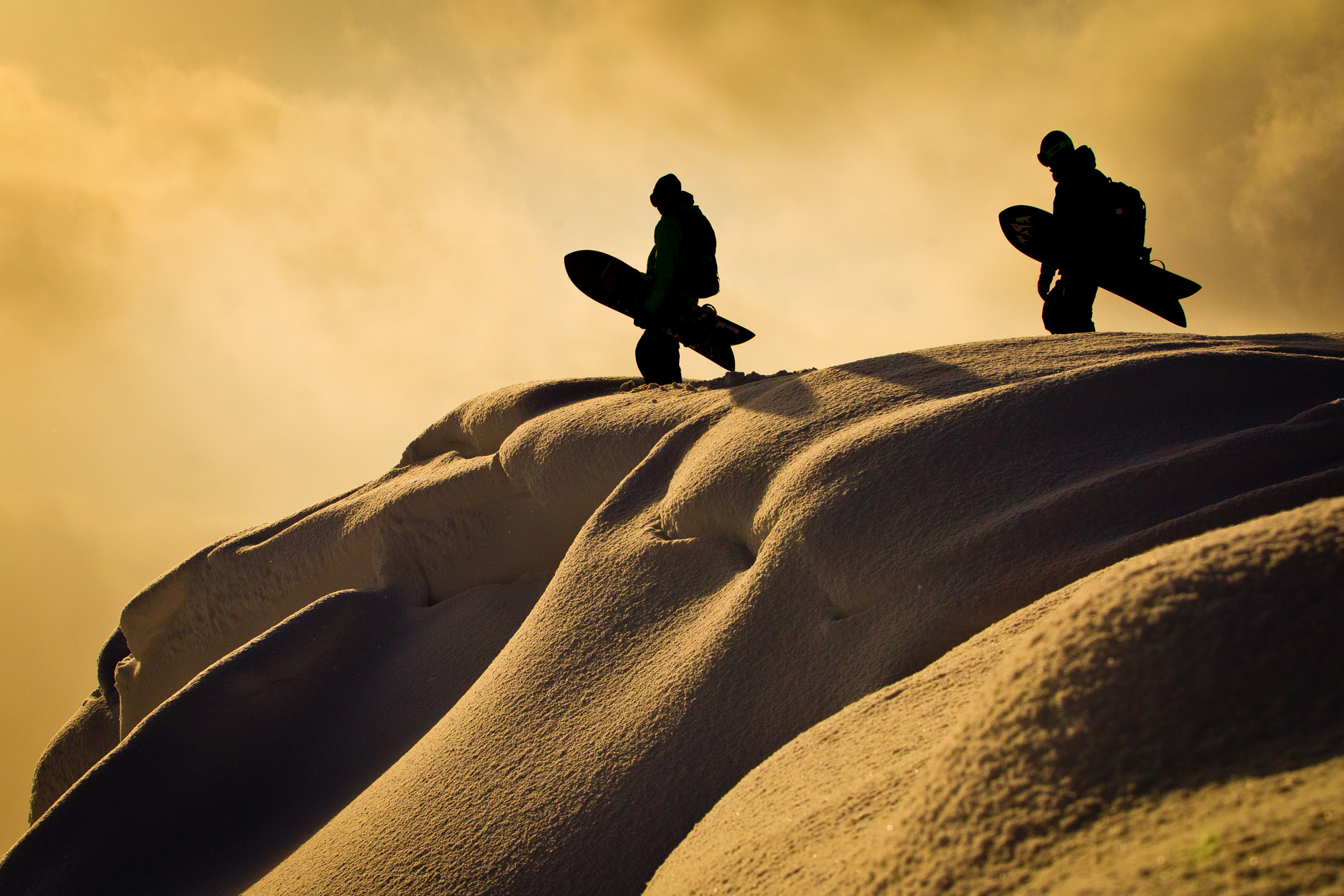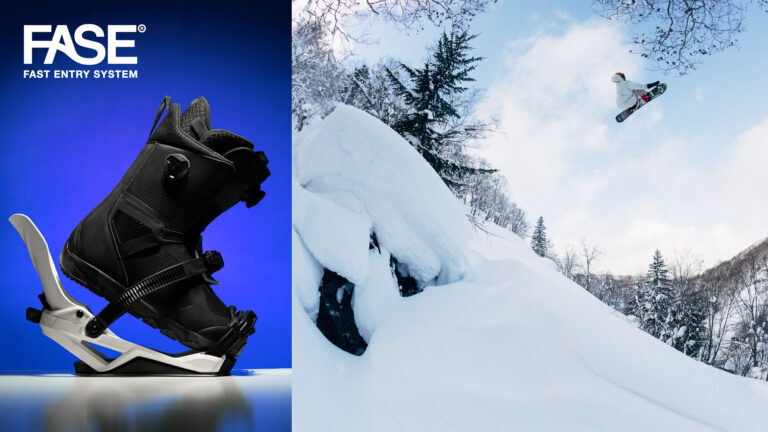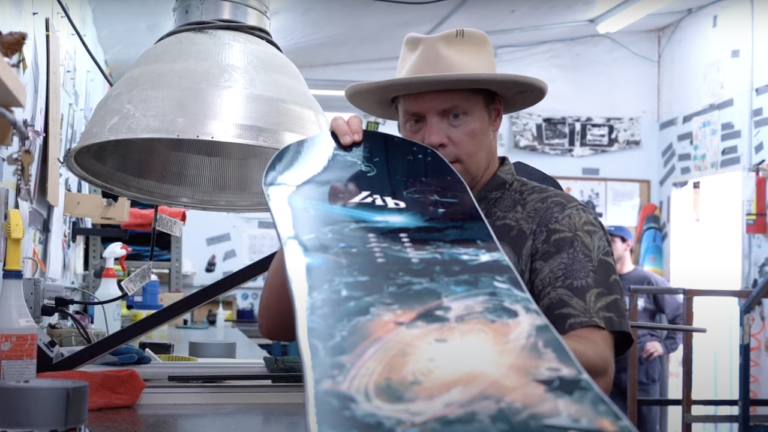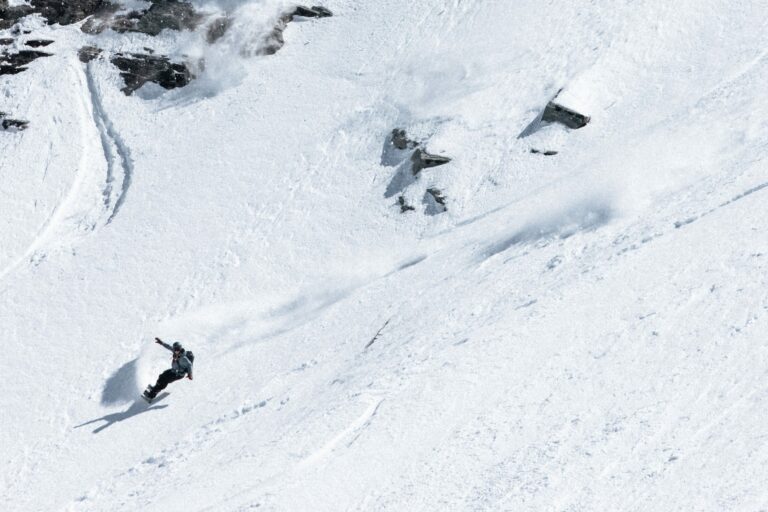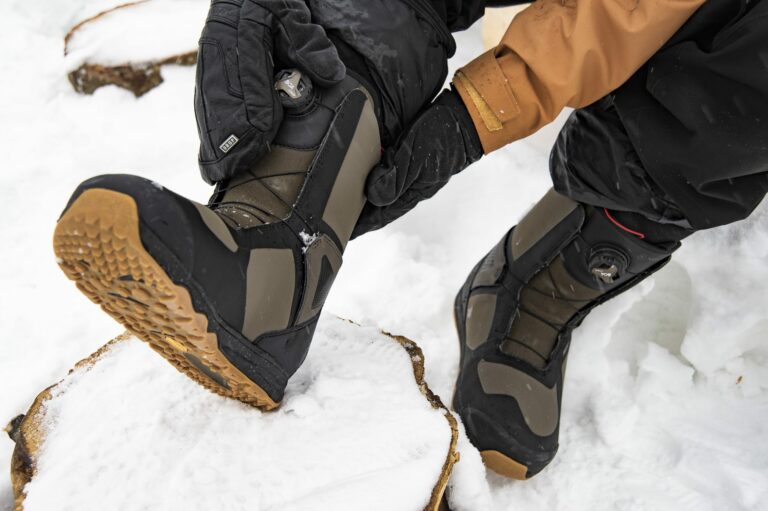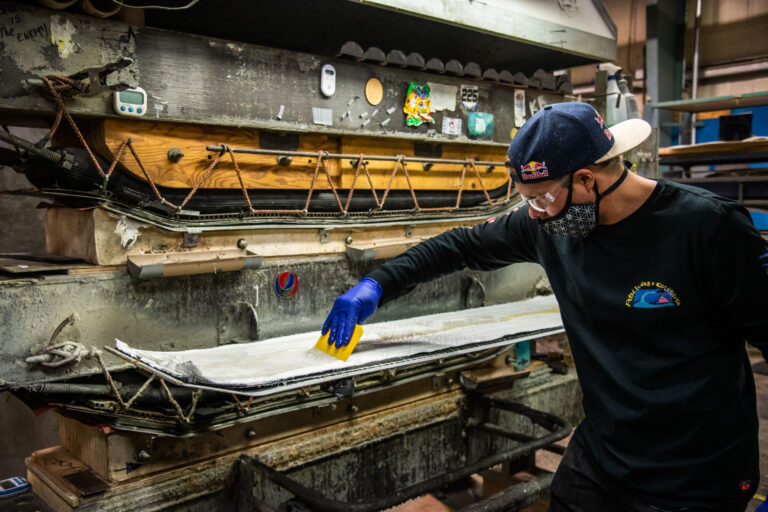Above: Forrest Shearer and surfboard shaper Chris Christenson testing a new surf rocker snowboard designed by Chris in Mowia backcountry, Japan. Photo: Andrew Miller.
When Jeremy Jones joined forces with renowned surf shaper Chris Christenson a few short summers back, it was the most authentic example yet of the recent cross-pollination in board design.
As the concept of powder-specific decks has taken hold, and carving has gone from a kooky retro activity to legit form of mountain expression, the market has been filled with ‘surf-inspired’ swallow-tails, but here was a collaboration that literally went back to the drawing board – taking genuine templates from cutting-edge watercraft, and an organic skillset honed over decades in the shaping bay, and applying them to the snow.
“If Jeremy Jones or Travis Rice had had the ability to change their board design every couple of weeks, I don’t think snowboards would look the way they do right now”
The result was pure alchemy. Witness the stunning curves of every model in the Surf Series, including the fish-like Storm Chaser, the hard-charging Lone Wolf and the binding-free Mountain Surfer. All these boards offer James Brown levels of soul, but the blunter-looking Mind Expander – which combines a proper surf rocker with 3D contours edge-to-edge – has proved perhaps the biggest game-changer in the range. Originally launched in 2017, there are now five versions of this popular all-rounder catering to kids, women, splitboarders and (with the new carbon-infused Ultra Mind Expander) gnarl-dogs.
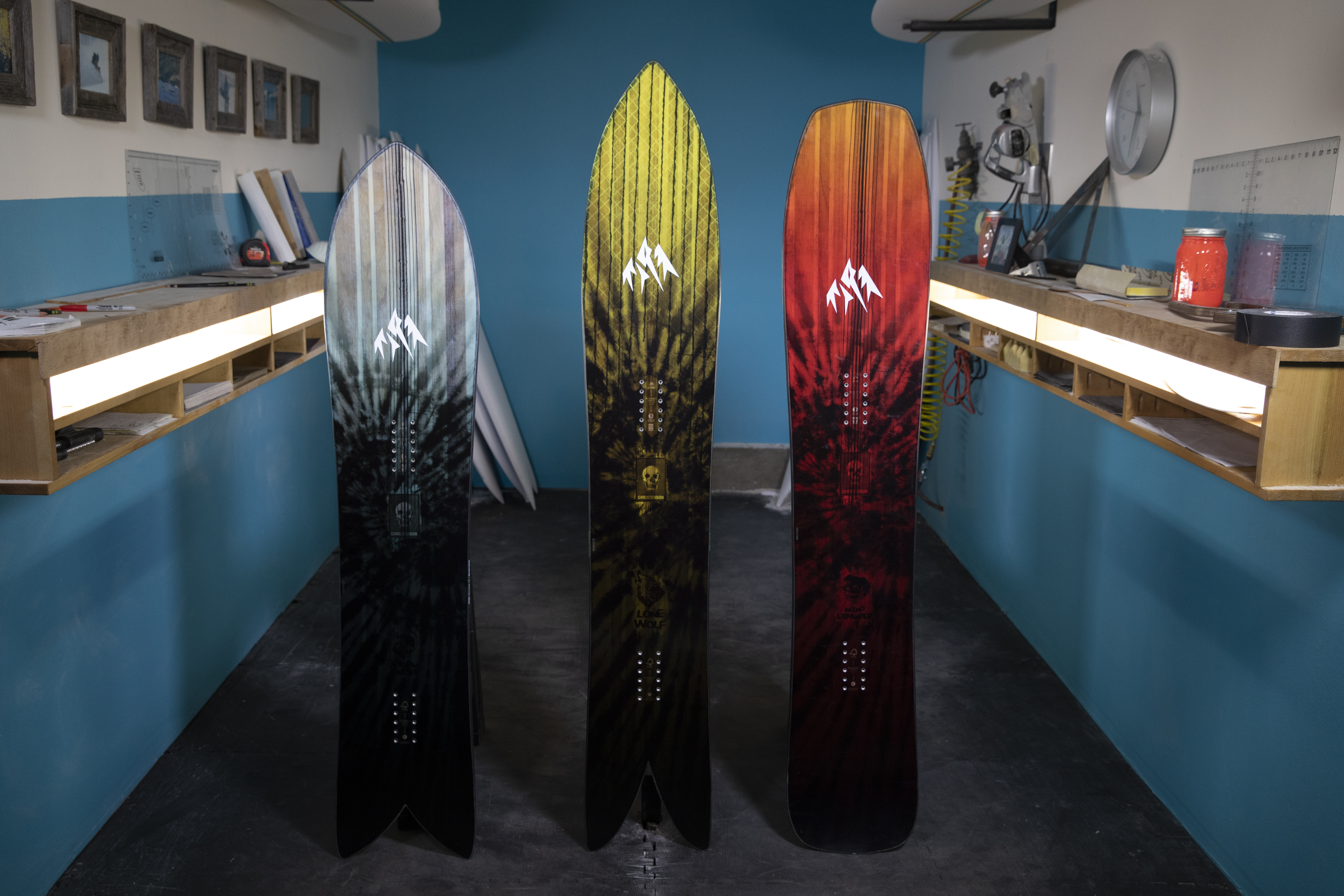
So how exactly did this prolific partnership start out? What’s next in the pipeline? And are there any limits to the collision of surf and snow design?
We caught up with Chris Christenson at his Southern Californian HQ to find out.

